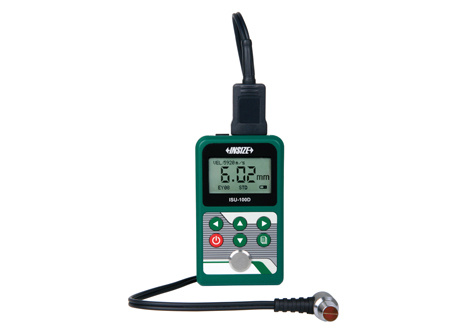ultrasonic thickness gage (basic type)
Ultrasonic Thickness Gage (Basic Type) – Simple, Reliable Wall Thickness Measurement
An Ultrasonic Thickness Gage (Basic Type) is a non-destructive testing (NDT) instrument designed to measure the wall thickness of materials from one side using high-frequency ultrasonic waves. This basic type model offers essential measurement capabilities with straightforward operation, making it ideal for routine inspection tasks in industrial and maintenance environments.
By emitting ultrasonic pulses and measuring their echo time, the gage accurately determines the thickness of metals, plastics, glass, composites, and other homogeneous materials—even through coatings or corrosion, depending on model support. Compact, portable, and user-friendly, it is widely used where destructive testing is not feasible and consistent material thickness is crucial for structural integrity.
Key Features of Ultrasonic Thickness Gage (Basic Type)
Non-Destructive Testing
Accurately measures material thickness without causing damage.
High Precision Measurements
Provides reliable and precise thickness readings for various materials.
User-Friendly Operation
Intuitive controls and a bright digital screen ensure fast and hassle-free measurements.
Compatible with Multiple Materials
Effortlessly measures thickness across metals, plastics, rubber, and more for broad industrial use.
Applications of Ultrasonic Thickness Gage (Basic Type)
- Pipeline & Tank Wall Corrosion Monitoring
- Shipbuilding & Marine Maintenance
- Automotive Sheet Metal Thickness Inspection
- Boiler and Pressure Vessel Testing
- Aerospace Component Thickness Control
- Plastic & Rubber Manufacturing QA
- Oil & Gas Equipment Integrity Check
How to Use an Ultrasonic Thickness Gage (Basic Type)
- Surface Preparation: Clean the area to be tested; remove rust, paint, or debris for better coupling.
- Apply Couplant: Use a gel or liquid couplant between the probe and test surface to transmit ultrasound effectively.
- Power On and Calibrate: Turn on the unit and calibrate it using a reference block of known thickness.
- Position the Probe: Place the probe firmly on the test surface.
- Read the Display: Thickness appears instantly on the digital screen.
- Repeat & Record: Take multiple readings for consistency and note down the lowest value if corrosion is suspected.
Technical Specifications
| Feature | Details |
|---|---|
| Measuring Range | 1.0 – 200 mm (steel), model-dependent |
| Resolution | 0.1 mm or 0.01 mm (select models) |
| Display | LCD with backlight |
| Sound Velocity Range | 1000 – 9999 m/s |
| Probe Type | Dual-element transducer (standard) |
| Accuracy | ±0.5% of reading ± 0.1 mm |
| Operating Frequency | 5 MHz (standard), others optional |
| Units | mm/inch switchable |
| Power Supply | 2 x AA batteries / Rechargeable Li-ion (based on model) |
| Battery Life | Up to 100 hours continuous use |
| Housing | Impact-resistant ABS or aluminum alloy casing |
| Operating Temperature | 0°C to +50°C |
| Data Storage | Basic models – no storage / Advanced basic – up to 500 readings |
| Couplant Required | Yes, for ultrasonic transmission |
| Certifications | CE / ISO / ASTM compliance |





